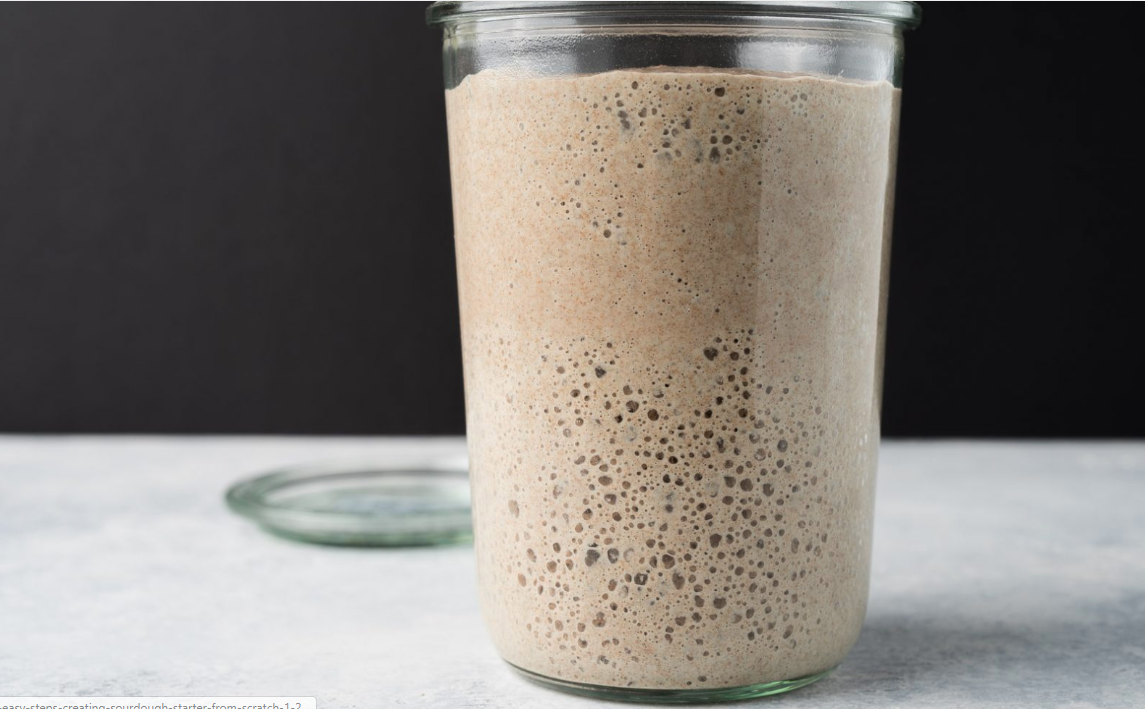What is a sourdough starter?
Sourdough starter is a culture of natural yeast. Similar to the cultures of bacteria and yeast used to make beer, kefir, or yogurt.
When making bread, a baker will add sourdough starter to a dough which takes the place of commercial or active dry yeast. The starter helps the bread to rise and ferments the flour and water to create the sour taste.
Because the fermentation process takes longer to occur in naturally leavened bread, this gave rise to the creation of instant or active yeast which can cut down on the process by more than half the amount of time. However with most things in life, you can’t rush perfection and the taste one achieves through the process of natural fermentation is worth the wait.
How do I make a sourdough starter?
Before we begin the recipe, it’s important to note that baking is often considered a science because of the necessity for precise measurements. So while it’s entirely possible to make amazing bread using volume based measurements (i.e cups and teaspoons); by using a scale and weighing your ingredients you more precisely measure your ingredients since all flours weigh differently. This removes a variable of uncertainty and will allow you to replicate or alter your results more easily.
The Recipe:
Sourdough Starter
Equipment
- Mason Jar (or other non reactive container)
- Culinary scale
Ingredients
- 500 g White non-bleached all purpose flour Whole wheat flour works as well (or a combination of the two)
- 500 g Filtered water
Instructions
Day One
- Combined 100g flour + 100g water in a glass or non-reactive container (mason jar, glass cup, or non-reactive bowl)
- Stir until all flour is incorporated (about 60 sec.) and cover with loose fitting lid, kitchen towel or plastic wrap. **Natural (or wild) yeast requires oxygen for fermentation so the lid doesn't need to be secured tightly
- Leave container in a warm place in the kitchen – above the fridge works well
Day Two
- **** after the first 24-hours the mixture will look very familiar. Not enough time has passed to really develop any fermentation ****
- This does not need to be extremely precise – Throw away about 90% of the contents of the jar, leaving about 20g (couple tablespoons)
- Add new 100g flour + 100g water to the same jar and combine (about 60 sec.)
- Leave container in a warm place in the kitchen
Day Three
- ****after 48-hours the mixture may smell ever so slightly fruity as the fermentation process is just beginning****
- Repeat day two instructions
Day Four
- ****after 72-hours the mixture should have a few bubbles which is a sign that the natural yeast are becoming more active. The mixture should also smell fruity/sour/funky.****
- Repeat day two instructions
Day Five
- ****at this point (96-hours) have passed and your starter should be active. You will notice that in the hours after you feed your starter (add flour + water) the mixture will rise and look fluffy and active.****
- Repeat feeding instructions. This will be done daily to maintain the health of your starter. Alternatively you can place the starter after feeding in the fridge, only requiring feeding once a week.


This is the most concise and easy-to-follow recipe for sourdough starter that I’ve found. You can tell he’s done his research and also acquired knowledge from his own trial and errors. I will definitely be referring this post to all of my other friends who are attempting sourdough recipes in quarantine.